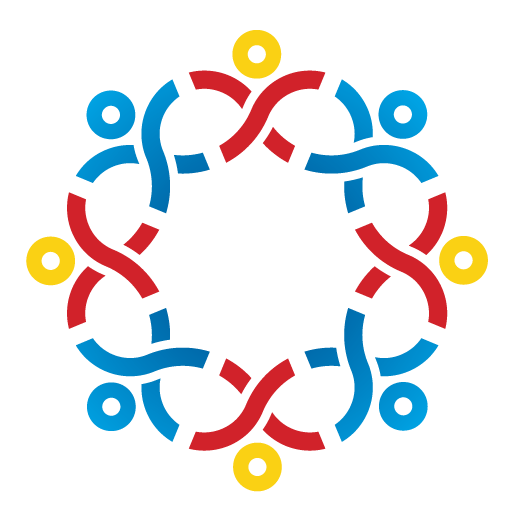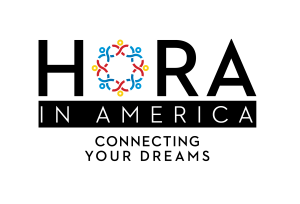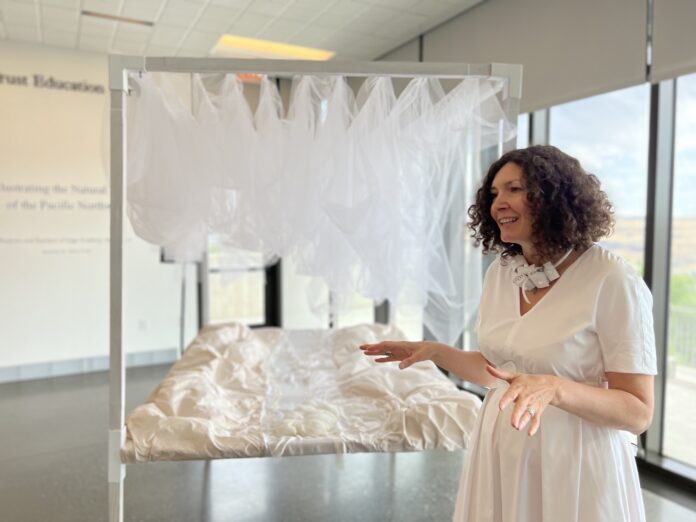
Maryhill Museum of Art Drive in Goldendale, WA has recently hold an unusual exhibit dedicated to the majestic Columbia River Gorge in Southern Washington State called Exquisite Gorge Project II: Fiber Arts. We are delighted to discover that a member of the Romanian community, artist Magda Nica, participated in this project in partnership with the American Romanian Cultural Society, along with other American artists, including artists from Central and South America and from around the world.
It’s quite a journey for a little girl born in a small town in Romania called Râmnicu Sărat where she lived until she was 14 years old. She left her town for a different city to go to high school, then for Bucharest to study at the university but in 1998 she immigrated for the first time to Rome, where she spent 21 years of her life. In August 2019 she moved to Seattle, following her husband. That’s where I found her to talk about her journey.
Irina VanPatten: What does it mean to you to be an artist? Are you choosing it for the freedom of expression, creativity or are you just restless?
Magda Nica: (Magda laughs): All of the above. It’s a mixture of everything, actually. Rome was a huge influence on me since it’s an open-air museum. You can’t be untouched by the cultural and artistic reality of that place. I started my carrier as a glass artist in Rome, and later I switched to painting. But even before that I was into jewelry making.
When I was four years old, I started by undoing my mom’s necklaces, then put them back together in a whimsical way. Also, when I was younger, I was making mărțișors (handmade artifacts to commemorate the beginning of spring) for the Gallery of Plastic Arts in Romania. Though, I was just a high school student and I didn’t have the status of an artist, they accepted my mărțișors because they were fun and unusual.
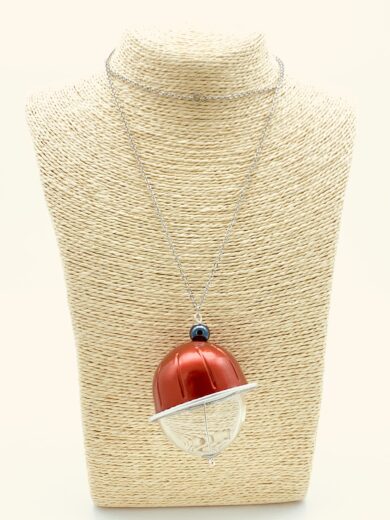 My destiny is to be an artist-pioneer. To open new paths. Once I master the technique, I then use it as a tool to create something new. My proudest achievement was when in 2009, as a glass artist I had an exhibition in Rome where for the first time in the 3,000 years history of glassmaking I was able to put metallic elements inside the glass. You see, glass and metal have two different dilatation quotes and this creates tension inside the glass. After a while, even if the glass is tempered and cooled down, the glass will break because metal keeps some tension inside. But I found a technique that allowed me to make glass creations to englobe metal inside in a way that the glass wouldn’t break later.
My destiny is to be an artist-pioneer. To open new paths. Once I master the technique, I then use it as a tool to create something new. My proudest achievement was when in 2009, as a glass artist I had an exhibition in Rome where for the first time in the 3,000 years history of glassmaking I was able to put metallic elements inside the glass. You see, glass and metal have two different dilatation quotes and this creates tension inside the glass. After a while, even if the glass is tempered and cooled down, the glass will break because metal keeps some tension inside. But I found a technique that allowed me to make glass creations to englobe metal inside in a way that the glass wouldn’t break later.
Irina VanPatten: Is there a name for this technique?
Magda Nica: No. The technique is the same as glassblowing. The difference was in the way the glass was layered. I used a very specific process to temper the glass where I brought the glass down from 400 degrees Celsius to the current state when the glass was cooled off and tempered. It was a very slow process. It took me four days instead of 24 to 36 hours, that it normally takes. The glass had to stay in the furnace for four days where the temperature was very well controlled. Then the glass was layered on top of the metal in a very specific way, so the end result would have been different.
Irina VanPatten: The word is out that in August you will participate in Maryhill Museum project with a textile sculpture. How did you go from glass to textile?
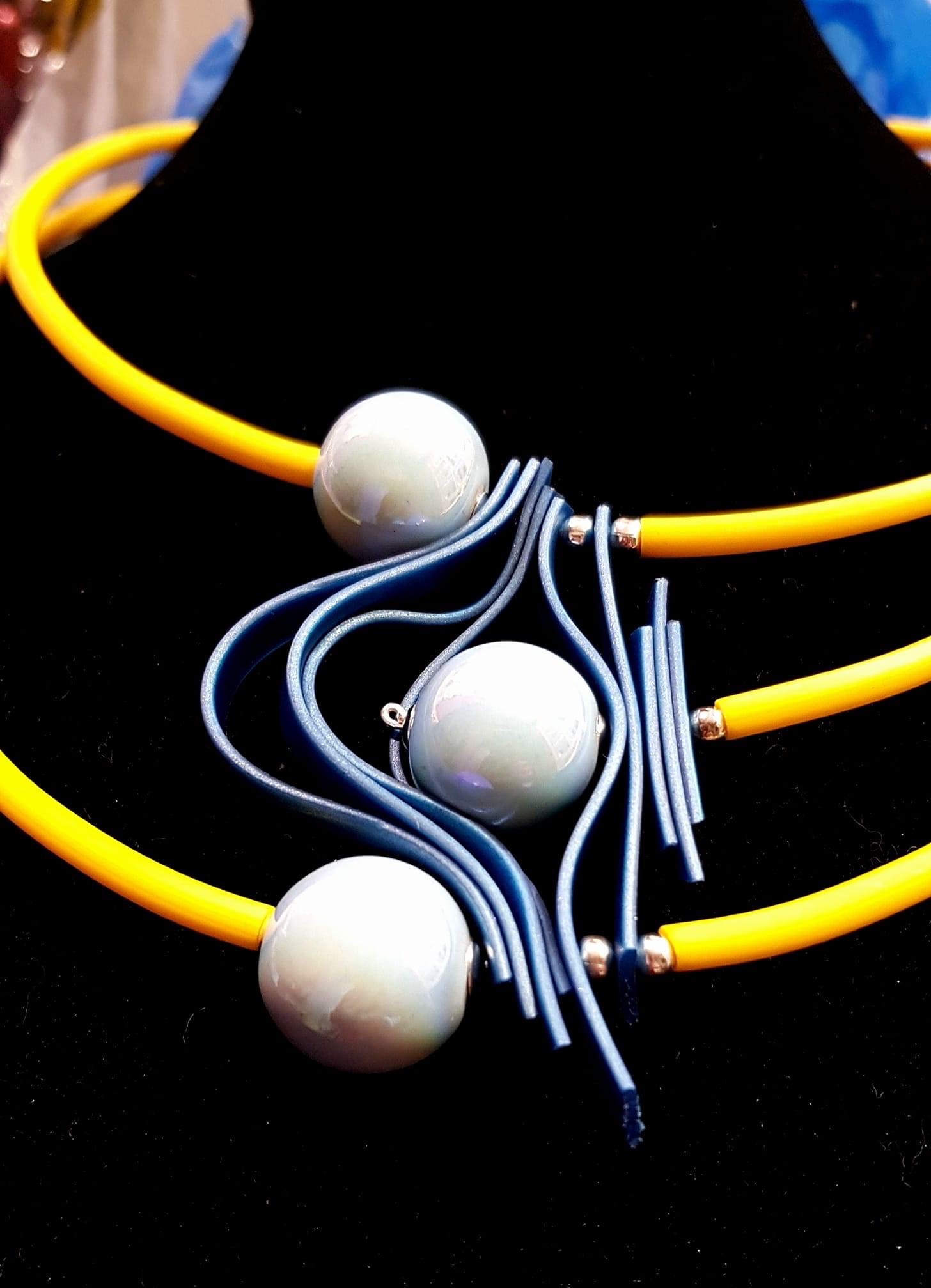 Magda Nica: It’s a challenge that I accepted. It all started in the summer of 2020 with a meeting for coffee with Otilia Baraboi, one of the founders of ARCS (American Romanian Cultural Society), who is a huge supporter of Arts. She saw one of my paintings, a white-on-white fabric on canvas, and she became very interested in that piece. Something clicked, and she said: “I think you might be interested to learn more about this project at Maryhill Museum.” And I was like: “Sure. Why not?” She got me in touch with the curator of the program Louise Palermo. I sent them my bio, and I was very honored when I was chosen for the project. I told them I am not a fiber artist but I would love to take the challenge. So, I did.
Magda Nica: It’s a challenge that I accepted. It all started in the summer of 2020 with a meeting for coffee with Otilia Baraboi, one of the founders of ARCS (American Romanian Cultural Society), who is a huge supporter of Arts. She saw one of my paintings, a white-on-white fabric on canvas, and she became very interested in that piece. Something clicked, and she said: “I think you might be interested to learn more about this project at Maryhill Museum.” And I was like: “Sure. Why not?” She got me in touch with the curator of the program Louise Palermo. I sent them my bio, and I was very honored when I was chosen for the project. I told them I am not a fiber artist but I would love to take the challenge. So, I did.
Irina VanPatten: As I understand, that’s a project on which you work together with other artists. How is this collaboration going?
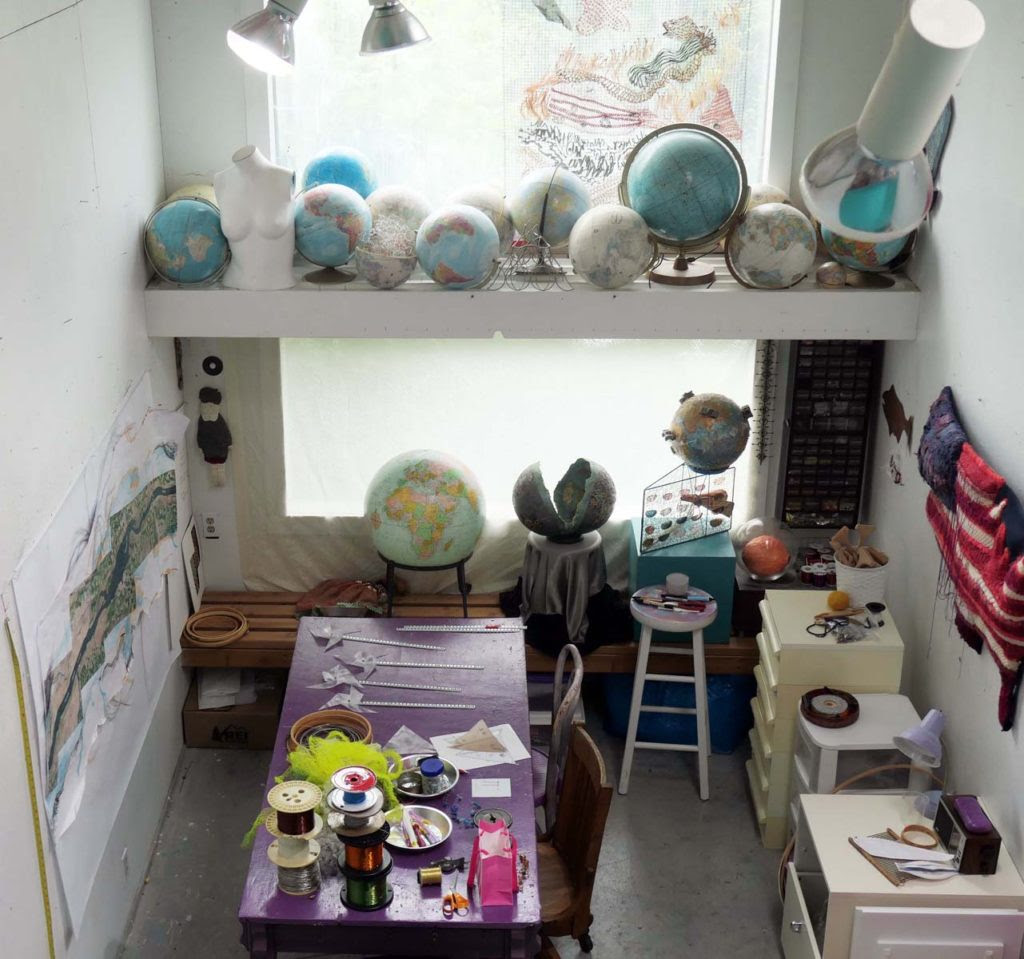 Magda Nica: That’s indeed a community project. Nevertheless, it’s a creation of individual artists. The way it works is that Columbia River was divided into 12 sections and each artist got one section to represent. Though, one of the sections is done by a husband-and-wife duo, so there are 13 artists in total. We don’t know what other artists do, or how they want to do it. There were only two requirements. First, to respect the flow of the river because the river has to flow in and out in a certain way, so when the sections are put together, the river flows correctly. Secondly, the media was supposed to be fiber or textile. Everything else was left to our discretion, based on independent vision of the artist. We could use any material we wanted to, any color, or chromatic point of view.
Magda Nica: That’s indeed a community project. Nevertheless, it’s a creation of individual artists. The way it works is that Columbia River was divided into 12 sections and each artist got one section to represent. Though, one of the sections is done by a husband-and-wife duo, so there are 13 artists in total. We don’t know what other artists do, or how they want to do it. There were only two requirements. First, to respect the flow of the river because the river has to flow in and out in a certain way, so when the sections are put together, the river flows correctly. Secondly, the media was supposed to be fiber or textile. Everything else was left to our discretion, based on independent vision of the artist. We could use any material we wanted to, any color, or chromatic point of view.
Irina VanPatten: And for the idea?
Magda Nica: Oh, I would like to share how I got the idea for my section because it’s an interesting story. Since I was asked to participate in this project, I had 6 or 7 ideas but every time I would think that was the final one, something would be wrong with it. Then I looked up and asked Almighty for help.
That night I had a dream about Queen Marie of Romania. She was very young, but I felt so nervous in front of her. I told her that I would like to make something that would make her proud of me because I didn’t want her to be ashamed of my work. She smiled and comforted me, then said: “Sew me a dress.” I woke up the next morning and I knew exactly what I wanted to do.
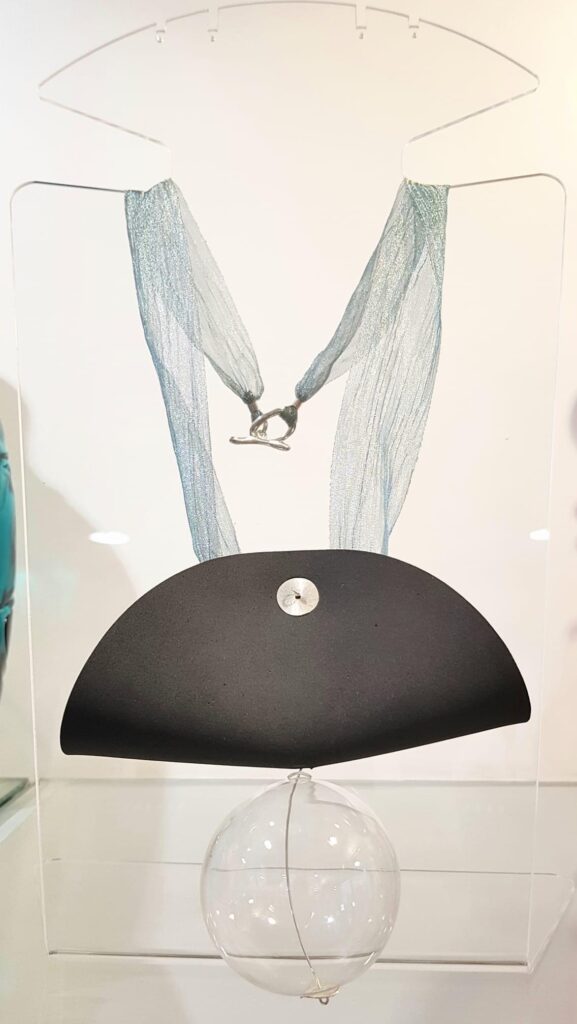 When I started to put the fabric together, I realized that it looked like a wedding dress. I never had a real, big wedding with the white dress and a veil. I got married in front of an officiant in a regular outfit, where we signed up the papers, and that was it. What was materializing was like a bride’s dress that I would have loved to have. And that’s what I did, I’ve sewn myself a bride’s dress.
When I started to put the fabric together, I realized that it looked like a wedding dress. I never had a real, big wedding with the white dress and a veil. I got married in front of an officiant in a regular outfit, where we signed up the papers, and that was it. What was materializing was like a bride’s dress that I would have loved to have. And that’s what I did, I’ve sewn myself a bride’s dress.
Irina VanPatten: Fascinating, but you don’t know how the project will turn out. It’s going to be a surprise when they put it all together. Right?
Magda Nica: Yes, it’s going to be a surprise. Though, we all have already exhibited our sections in our communities, and I saw other artists’ pieces on social media, so I have an idea how other artists’ work looks like. But it’s going to be fascinating to see the entire installation, that’s almost 70 ft long.
Irina VanPatten: How difficult is to work with the material that you chose? You’re using not only pearls and glass but also metal, like titanium, and rubber that look very minimal or post-industrial. Is it difficult to work with them?
Magda Nica: Generally, I don’t work with metal per se. I paint and make jewelry. I use some metallic components, like titanium mash but that’s rather easy to mold and shape by hand. For the thicker metal components in the jewelry that I make, I use pliers to twist the wires.
For this specific project, it’s all fabric. I use a variety of silks and an old, handwoven năframă (an old Romanian scarf). Everything is handsewn and stitched, including the net that supports the composition. I didn’t englobe any other materials for my section. But I do englobe other objects when I make jewelry from alternate materials.
Irina VanPatten: You’re a creative artist. Do you have any plans to pass your knowledge and the new techniques that you mastered to the new generation of artists?
Magda Nica: Honestly, I have never thought about that because I have never thought I would be in a position to teach someone. Though, I have lots to say and share. Probably, that’s something I should consider. Perhaps, the student arrives when the professor is ready.
I’m almost 49 years old. I have difficulties with conceptual art. I’m of the generation that was taught to use their hands. For me, it’s important to have my hands on and practice. As an artist you need to master the way you work with the matter, whatever you choose as your media. If it’s color, a painting, a sculpture, wood, fabric, whatever, it doesn’t matter. Therefore, I would, probably, do more workshops than theoretical lessons.
Irina VanPatten: What is your message to people whom you think should see this exhibit?
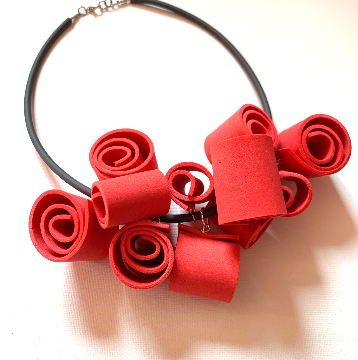 Magda Nica: Knowledge means light. When you’re in contact with something new, you step into the light. The darkness is the place that holds us in, that makes us behave in an unnatural way. There are 13 creative minds at that exhibit. Even if you don’t particularly identify yourself with my creation, you might like other artists’ creations.
Magda Nica: Knowledge means light. When you’re in contact with something new, you step into the light. The darkness is the place that holds us in, that makes us behave in an unnatural way. There are 13 creative minds at that exhibit. Even if you don’t particularly identify yourself with my creation, you might like other artists’ creations.
We come from different places with a different cultural background. We sort of represent the archetypes of our society. I come from Romania and I brought we me my cultural and emotional baggage. There is an artist who came from Israel, she did the same. There are artists from South America-Mexico, Chile or Peru, and there are other American artists from different places in the United States. Each of them brings their own experience. It’s important to open yourself up to what’s new, to want to learn more, to see and touch because it activates all your senses. Come and see it for yourself.
